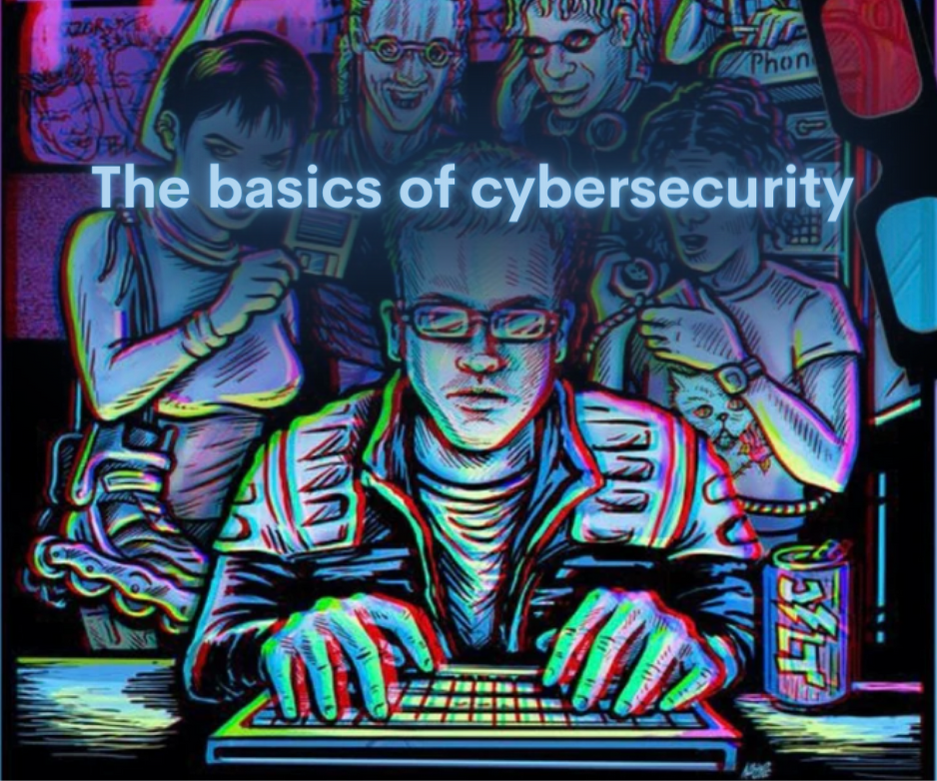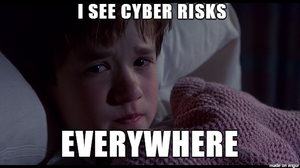The basics of cybersecurity

Hey everyone!
root@icyberjutsu:- # whoami

I'm Aman Kumar (icyberjutsu), an enthusiastic cybersecurity researcher from India. Hope you all are doing great and safe in the digital world. In this write-up, I want to take you on a journey to explore the exciting and ever-evolving field of cybersecurity.
I aim to provide you with a solid understanding of the basic concepts and terms related to this field and how they are used to protect our digital lives.
This write-up is designed to empower you with the knowledge and understanding of the need for cybersecurity and common terminologies, such as hacking, hackers, vulnerability, exploit, and insider threats, to the phases in which a security breach takes place. So, let's dive in and discover the fascinating world of cybersecurity together!
The Need for Cybersecurity

The world today is more connected than ever. People and organizations use the internet and computers to share, store and process sensitive information like financial data, personal details, confidential business information, and more. With the rise of technology, the risk of cyber threats has also increased. Hence, it has become essential to ensure the security of this information. Cybersecurity protects internet-connected systems, including hardware, software, and sensitive data, from theft or damage to the hardware, software, or information they contain.
1.– Hacking

Hacking is the unauthorized access or alteration of computer systems or networks for personal gain or malicious purposes. It can be performed by individuals with varying technical expertise, from amateur script kiddies to professional black hat hackers. Hacking can lead to the theft of sensitive information, damage to systems, and other harmful consequences for organizations and individuals. To prevent hacking, individuals and organizations must implement strong cybersecurity measures and educate themselves on the latest threats and best practices.
2.– Hackers

Hackers play a crucial role in the world of cybersecurity. They use their knowledge and skills to gain unauthorized access to computer systems, networks, or websites. Hackers can be classified into several categories based on their motives and methods. Understanding these different types of hackers is essential to prevent and responding to cyber threats.
- White Hat Hacker: White hat hackers, also known as ethical hackers, use their skills for defensive purposes. Organizations often use them to test their systems for vulnerabilities and identify and resolve security problems. White hat hackers use the same methods as black hat hackers to find security weaknesses. Still, instead of exploiting these vulnerabilities, they report them to the organization so they can be fixed. White hat hackers are essential in helping organizations develop more robust security measures to prevent future attacks.
- Black Hat Hacker: Black hat hackers, on the other hand, are malicious individuals who use their technical skills to cause harm to computer systems and steal sensitive information. They often operate with criminal intent and use their skills to commit cyber crimes such as identity theft, financial fraud, and data theft. Black hat hackers are responsible for many high-profile cyber-attacks that make the news and can cause significant damage to individuals and organizations.
- Grey Hat Hacker: Grey hat hackers fall between white and black hat hackers. They might not have malicious intentions, but they often use their skills for personal gains, such as selling information obtained from hacking to other parties. Grey hat hackers might not cause direct harm to computer systems, but their actions can still be illegal and unethical.
- Script Kiddies: Script kiddies are novice hackers who use pre-written scripts and tools to carry out hacking attacks. They could be more exceptionally skilled and understand the underlying technology of their tools. Script kiddies are often considered a nuisance rather than a serious threat, but they can still cause significant damage through these scripts and tools.
3.– Vulnerability

Vulnerability refers to a weakness or a gap in a computer system or software that can be exploited by an attacker. It can arise for several reasons, such as poor design, coding errors, outdated software, etc. A vulnerability can give an attacker a path to access sensitive information, disrupt operations, and cause harm to the system. With the increasing number of connected devices and the dependence on technology, vulnerabilities have become a significant concern for individuals and organizations alike. To protect against vulnerabilities, organizations must take steps to identify and remediate them through regular security updates and patch management. Regular security assessments and penetration testing can also help organizations identify and resolve vulnerabilities before they are exploited.
4.– Exploit

An exploit is a malicious code that takes advantage of a computer system, network, or software vulnerability to gain unauthorized access or cause harm. Hackers often use exploits to gain entry into systems, steal sensitive information or cause disruption to operations.
The term "exploit" refers to executing a malicious code that takes advantage of a vulnerability. The vulnerability itself is a weakness in the system or software that can be exploited by the attacker. Vulnerabilities can arise from coding errors, outdated software, poor design, and other factors. Once the vulnerability has been discovered, the attacker creates the exploit code to take advantage of the weakness. There are several types of exploits, including:
- Remote Exploits: Remote exploits are designed to take advantage of vulnerabilities in systems and networks from a remote location. These exploits are often used to carry out large-scale attacks on organizations, governments, and individuals. Remote exploits typically target servers, network devices, and other critical systems that have a broad reach and are essential to operations.
- Local Exploits: Local exploits are designed to take advantage of vulnerabilities in a local system, such as a computer or smartphone. These exploits often require physical access to the target device or proximity to a wireless network. Local exploits are often used to steal sensitive information or cause harm to the system.
- Zero-Day Exploits: Zero-day exploits are a hazardous type of exploit. These exploits take advantage of unknown vulnerabilities to the vendor or software developer. Because the vulnerability is unspecified, no patch or fix is available to mitigate the attack risk. Zero-day exploits can cause significant harm to organizations and individuals, as the attacker can exploit the vulnerability before the target is aware of the risk.
Individuals and organizations must keep their systems and software up-to-date with the latest security patches and updates to help prevent exploits and reduce the risk of cyber attacks. Regular security awareness training can also help individuals identify and respond to potential exploits, mitigating the risk of cyber threats.
5.– Zero-Day Attack/Vulnerability

A zero-day attack is a malicious attack that exploits a previously unknown vulnerability in software or systems. This attack is hazardous because the vendor or software developer is unaware of the exposure, leaving the system open to exploitation by hackers. A zero-day vulnerability is an underlying weakness in a system or software that allows for a zero-day attack. These vulnerabilities can exist for long periods without being discovered, making them particularly dangerous. Once a zero-day vulnerability is discovered, malicious actors can rapidly exploit it before a patch or fix is made available by the vendor or software developer.
6.– Insider Threats

Insider threats are a significant security concern for organizations as they come from within the organization itself. This threat involves employees, contractors, or any other individual who has access to the organization's systems or sensitive information and uses it for malicious purposes. Insider threats can occur when an individual with access to sensitive information intentionally or unintentionally causes harm to the organization. This can be done for personal gain, political motives, or just for the sake of causing damage.
These threats are considered the most dangerous as they directly connect to the organization's systems and sensitive information, allowing them to cause significant damage. Insider threats can lead to data theft, loss of confidential information, and disruption of operations, causing harm to the reputation and financial stability of the organization.
I extend my sincerest thanks to you for taking the time to read this write-up. I hope that the information provided on the various topics, such as hacking, exploits, and insider threats, has been informative and useful to you.
Your interest in cybersecurity is commendable, and I wish you the best of luck in your journey.
Thank you again for your time and consideration. I look forward to your continued engagement with my work and hope that you will continue to find value in my writing.
Connect with me:
Happy Hacking :)